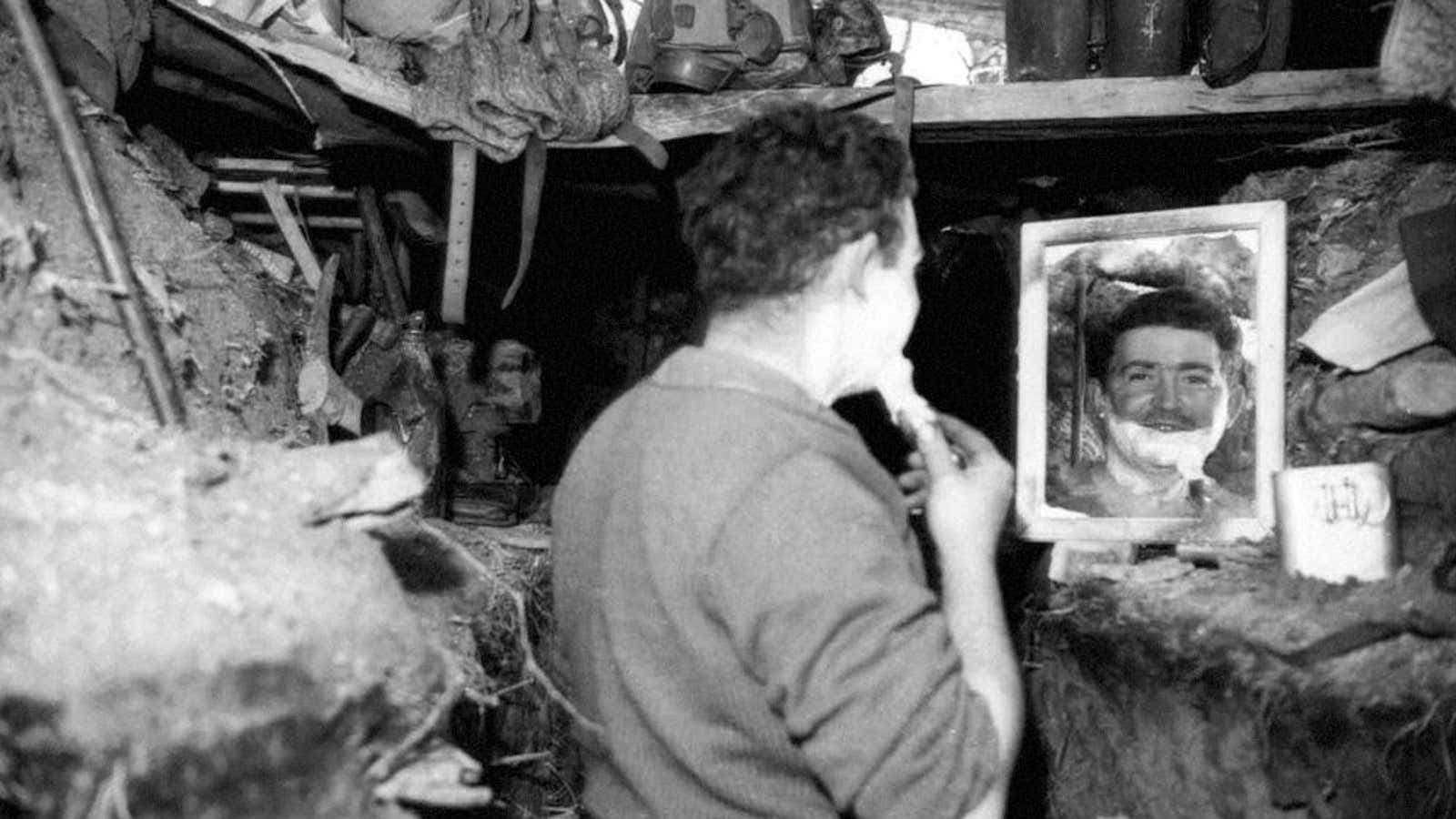It’s easy to take the conveniences of modern life for granted—like the fact that the vast majority of us will never develop anthrax infections in our skin.
But back in the 1920s, men in the US and British militaries weren’t so lucky. A new report (pdf) put out by the US Centers for Disease Control links outbreaks of cutaneous anthrax to cheap and dirty shaving brushes used during the first World War. Combing through historical records, the authors found accounts of about 250 cases of anthrax infections on the face and neck in American and British soldiers and a handful of civilians between 1915 and 1924. Dedicated members of the New York City Board of Health found that brushes were to blame, and quickly published new guidelines on brush cleaning; after 1930, brushes were safe to use again.
As the Verge reports, back then soldiers had to wear gas masks to protect themselves from chlorine gas attacks, a new technology at the time. (In its gaseous form, chlorine essentially turns the water in your lungs into hydrochloric acid; you die from an extremely painful kind of suffocation). These masks didn’t fit over beards, so all the men had to keep themselves clean-shaven.
At the time, men lathered on shaving cream with brushes, usually made from badger hair sourced in Russia. However, the war meant that Britain and the US weren’t trading with Russia, so they got knockoff brushes made with horsehair instead. Anthrax bacteria live naturally in the soil and can be picked up by horses. When manufacturers didn’t properly disinfect their horsehair brushes, they carried the little bacterial spores of Bacillus anthracis that worked their way into shaving nicks.
Usually when we think “anthrax,” what comes to mind are the white spores mailed to media offices in the week after 9/11. When inhaled, these spores can cause a lung infection that is fatal in over 80% of cases without treatment.
The prognosis for skin anthrax infections is much better; although the bacteria causes a necrotic ulcer (read: kills a tiny patch of skin), only about 20% of people who get these infections die without treatment. Although there was an anthrax antiserum available in the 1920s, shaving-brush infections still killed 90 men, according to the CDC report.
At the time, the only documented cases of anthrax were in the US, Britain, and Germany, although it was common knowledge that infections occurred frequently in areas like Africa and Asia where it was spread through farm animal to human contact. Luckily, once proper disinfection techniques (like steaming or high-pressured cleaning) became common practice for shaving brush manufacturers, cutaneous anthrax cases plummeted; now, they’re almost nonexistent in the US. Around the globe, there are occasional reports of outbreaks from unclean slaughterhouses or farms in remote areas.
The authors of the CDC report end with a note to hipsters: “This article serves to remind those interested in a return to natural grooming that use of untreated hair from horses, pigs, badgers, or other animals poses a potential…risk of inoculating anthrax spores into the abrasions and minor lacerations caused by shaving razors,” they write. So basically, make sure your antique shaving brush comes from after the 1930s.
